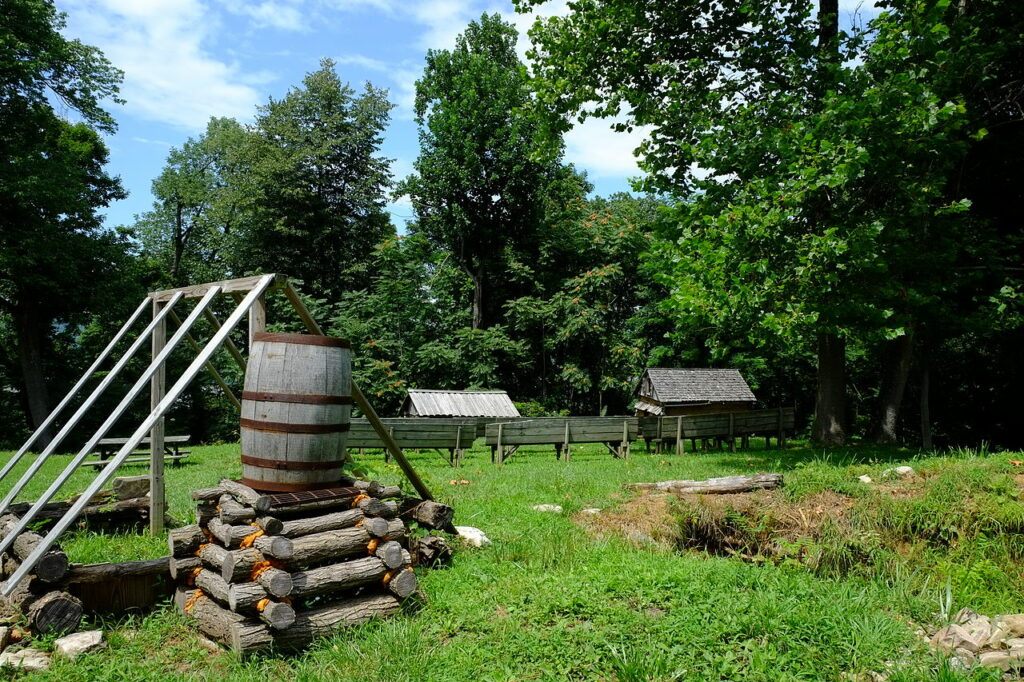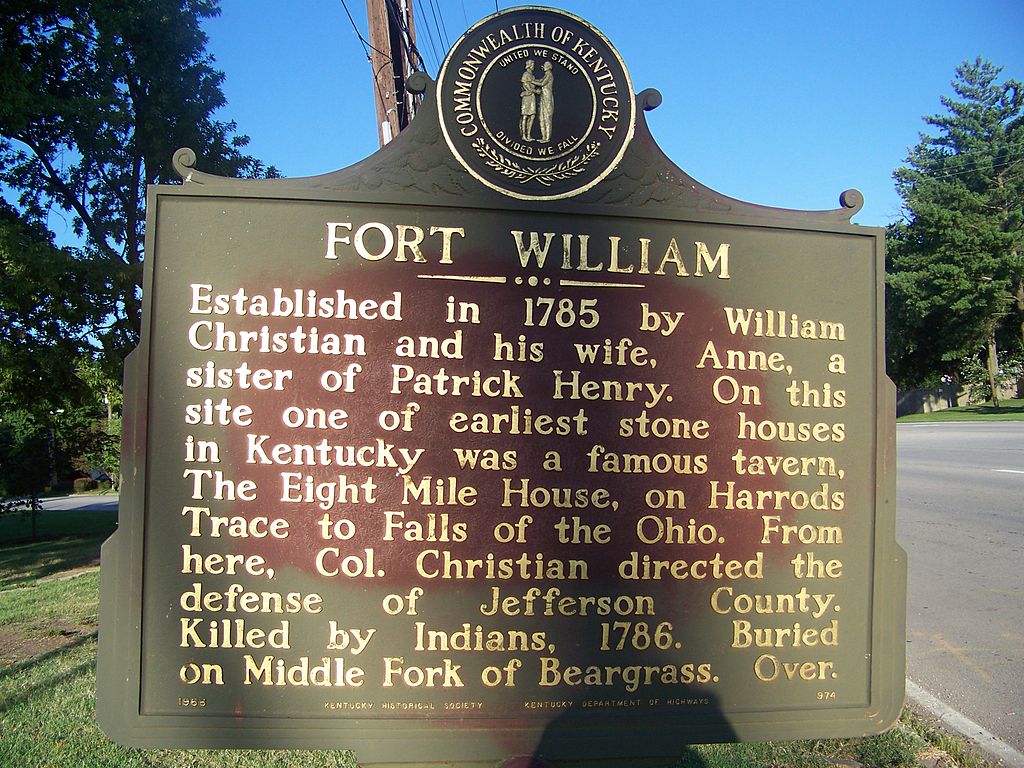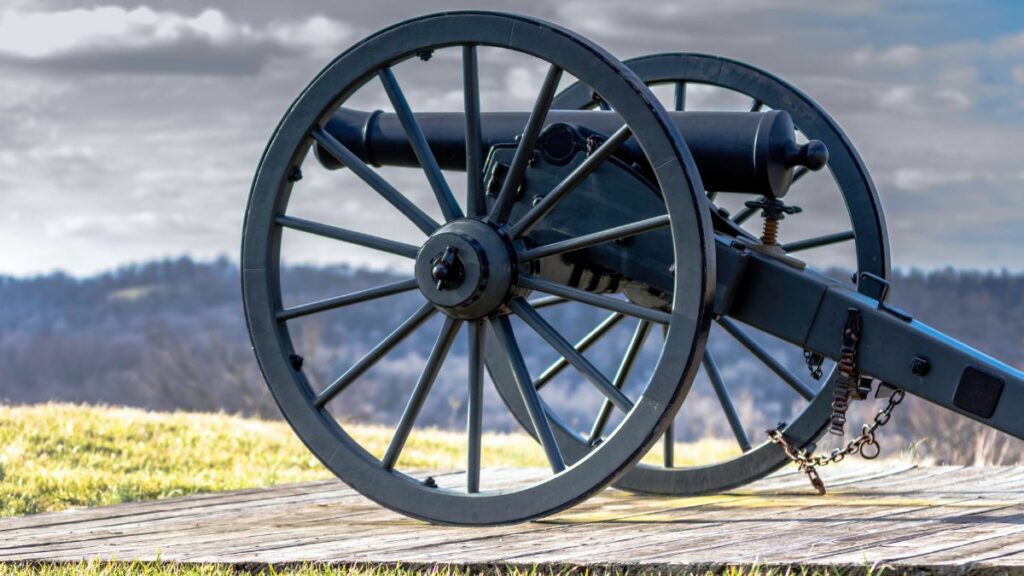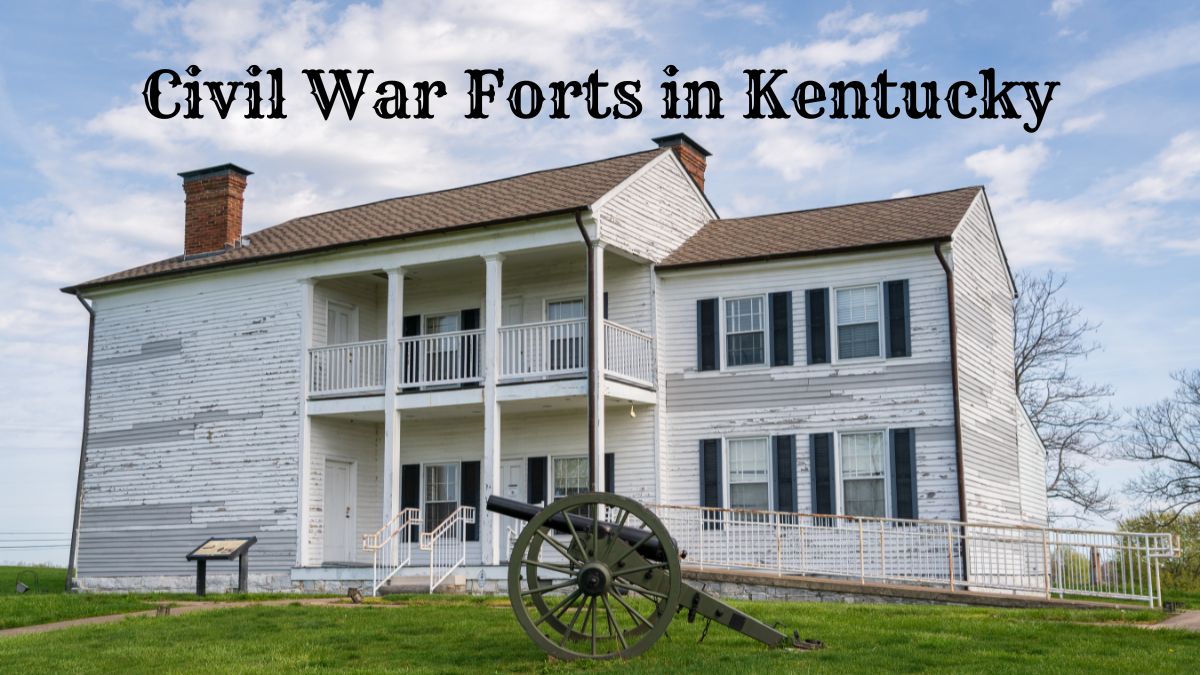Kentucky’s rolling hills and strategic riverways hold the echoes of a tumultuous past, where the conflict of a nation divided played out in the form of earthen forts and stone battlements.
In my upcoming article, “Civil War Forts in Kentucky: Exploring Historic Battlegrounds,” we explore the heart of the Bluegrass State’s martial heritage, uncovering the stories of bravery and tragedy that unfolded within its borders.
As a border state of significant strategic importance, Kentucky’s landscape was dotted with fortifications that bore witness to the clash of Union and Confederate forces.
These historic sites, from the imposing Fortress Monroe to the remnants of Fort DeRussy, stand as silent sentinels to the era’s fierce battles and military ingenuity.
Join me on a journey as we explore the ruins and restored forts that continue to captivate historians and enthusiasts alike, offering a tangible link to the Civil War’s enduring legacy in Kentucky.
Overview of Kentucky Civil War Forts

During the American Civil War, Kentucky’s strategic position as a border state made it a focal point for Union and Confederate forces.
As a result, several fortifications were constructed throughout the state to control key transportation routes and vital resources.
Union efforts created strongholds such as Fort Duffield, which safeguarded the Louisville and Nashville Railroad.
Fortifications like these were essential in maintaining Union control over the region and facilitating troop movements.
While not directly involved in any significant skirmish, the well-known Fort Knox protected the Louisville area and exemplified Union engineering capabilities.
Conversely, Confederate troops worked to erect their defensive structures. Columbus-Belmont State Park, once the site of Confederate fortifications, played an important role in controlling the Mississippi River traffic.
These sites often suffered from limited resources compared to their Union counterparts and were vulnerable to Union advances.
The interplay of Union forces and Confederate forces in Kentucky left a landscape scattered with military sites marked by earthworks and ruins.
Some fortifications saw fierce engagements, while others served as deterrents or logistical bases. Today, many of these historical sites are preserved to provide insight into the Civil War’s military strategies and the state’s divided allegiance.
Significant Civil War Forts and Battlefields
Kentucky’s strategic location meant it was the site of numerous Civil War military engagements, including forts and battlefields critical to the Union and Confederate forces.
The preservation of these sites provides insight into military strategies and the sacrifices made during the war.
Historical Significance of Fort Duffield

Preservation of a Civil War Landmark Fort Duffield is distinguished as one of Kentucky’s most well-preserved earthen forts. It offers a rare glimpse into the Civil War era’s military fortifications.
The fort’s earthworks have withstood the test of time, allowing visitors to experience a piece of history in its near-original condition.
Strategic Military Value During the Civil War Constructed under the supervision of General William Tecumseh Sherman, the fort was strategically positioned to serve as a defensive stronghold.
Its location on a hilltop near West Point, Kentucky, provided Union forces with a vantage point to oversee and control key transportation routes along the Ohio River, which were vital for the movement of troops and supplies.
Protecting Louisville’s Supply Base The fortification played a pivotal role in safeguarding the Union’s supply base in Louisville.
By ensuring the security of Louisville, Fort Duffield helped maintain the Union Army’s operational strength in the Western Theater, which was crucial for their ultimate success.
Fort Duffield Today
A Living History Experience Currently, Fort Duffield Park and Historic Site is a tribute to the Union soldiers’ endeavors. It is an educational resource where individuals can immerse themselves in the history of military life during the Civil War period.
Commemorating Union Efforts The park not only preserves the fort’s physical structure but also honors the memory of those who built and manned it.
It provides a space for reflection on the sacrifices made during a defining period in American history.
Engaging Educational Programs and Events Fort Duffield hosts various engaging events and programs, including battle reenactments and historical presentations, which educate the public about the Civil War and its enduring impact on the nation.
These activities ensure that the legacy of Fort Duffield and the soldiers who served there continue to be remembered and appreciated by future generations.
Camp Nelson’s Role in the Civil War

Camp Nelson, located in Jessamine County, Kentucky, along the banks of the Kentucky River, played a pivotal role during the American Civil War.
Established as a Union Army supply depot, recruitment center, and training camp, it became one of Kentucky’s most significant facilities for the Union cause.
Establishment and Strategic Importance
Camp Nelson was officially established in June 1863, named after Major General William “Bull” Nelson, who had been murdered the previous year.
The site was chosen due to its defensible position, proximity to the Kentucky River, and access to the Louisville & Nashville Railroad, which are critical for transportation and supply lines.
President Abraham Lincoln, understanding the strategic importance of Kentucky as a border state, recognized Camp Nelson as a key asset for the Union’s operations in the region.
Lincoln’s administration knew maintaining control over Kentucky was vital for the Union’s strategic interests and overall success in the Civil War.
Role as a Supply Depot and Recruitment Center
Camp Nelson was a significant supply depot, providing the Union Army with the necessary resources to sustain its military campaigns.
The depot stored vast supplies, including food, ammunition, and medical equipment, crucial for supporting Union forces in the Western Theater of the Civil War.
The Emancipation Proclamation, issued by President Lincoln on January 1, 1863, paved the way for recruiting African American soldiers into the Union Army.
Camp Nelson became a central recruitment center for African American enlistees, many of whom were escaped slaves seeking freedom and an opportunity to fight for their liberation.
The Role of African American Soldiers
The African American soldiers trained at Camp Nelson were formed into regiments of the United States Colored Troops (USCT). These soldiers underwent rigorous training at the camp to prepare them for combat.
They played a crucial role in Union military operations, participating in significant battles and contributing to the Union victory.
The courage and dedication of the African American soldiers from Camp Nelson were vital to the Union war effort.
Their willingness to join the fight for freedom added much-needed manpower to the Union Army and helped shift the tide of the war in favor of the North.
Preservation of History
Today, Camp Nelson is recognized for its historical significance, particularly regarding the role of African American soldiers in the Civil War.
The site has been preserved to honor these soldiers’ contributions and to educate the public about this important chapter in American history.
Recognizing its historical importance, Camp Nelson was designated a National Monument on October 26, 2018.
This designation helps to protect and maintain the site, allowing visitors to explore the grounds where thousands of African American soldiers trained and to learn about their struggles and triumphs during the Civil War.
The Camp Nelson Heritage National Monument offers educational programs, guided tours, and exhibits to provide insights into the lives of the soldiers who trained there.
Memorials and interpretive signs throughout the park help tell these men’s stories and their significant impact on the war and the broader fight for civil rights.
Fort Williams

Fort Williams, which overlooks Glasgow, Kentucky, was historically significant during the American Civil War. Union forces constructed it in 1863 as a defensive position.
The fort was named after Colonel John M. Williams of the 25th Michigan Infantry, who was tasked with overseeing its construction and ensuring the area’s defense.
The fort was built in response to the Confederate cavalry raids common in Kentucky, a border state of strategic importance to the Union and the Confederacy.
The goal was to protect the Louisville and Nashville Railroad, a vital regional supply line for Union forces.
Colonel Williams and his men built the fort atop a hill that offered a commanding view of the surrounding area, making it ideal for spotting approaching Confederate forces.
The earthworks and fortifications were designed to provide a solid defensive position against attacks.
While Fort Williams was not the site of any major battles, it played a role in the Union’s efforts to secure Kentucky and maintain open transportation and communication lines.
The presence of the fort and its garrison deterred Confederate movements and raids in the area, contributing to the Union’s broader strategic objectives in the Western Theater of the Civil War.
After the war, Fort Williams, like many other temporary military installations of the era, was abandoned as military needs changed. Over time, the structures deteriorated, but the earthworks remained visible.
Fort Williams Today
Today, the site of Fort Williams is recognized for its historical value, and efforts have been made to preserve what remains. It serves as a reminder of Glasgow’s role in the Civil War and the soldiers who served there.
The fort is a part of the local heritage. It provides educational insight into the era’s military strategies and the soldiers’ daily lives stationed in such fortifications.
The Civil War Fort at Boonesboro: A Union Stronghold

The Civil War fort at Boonesboro, Kentucky, was a Union fortification constructed during the American Civil War.
This fort was strategically positioned near the Kentucky River, not far from the site of the historic Fort Boonesborough, a frontier fort established by Daniel Boone in the 18th century.
The Civil War fort, however, was a separate entity built to meet the demands of the conflict between the Union and the Confederacy.
Kentucky’s status as a border state with divided loyalties made it a focal point during the Civil War. The Union was determined to hold Kentucky to prevent the Confederacy from gaining a strategic advantage.
The state’s resources, manpower, and control over critical transportation routes were vital to the Union’s war effort.
Union Defensive Strategy
Union forces erected a series of forts and camps across Kentucky as part of their defensive strategy. The fort at Boonesboro was included in this network, serving as a bastion against Confederate raids and movements in the region.
It provided a secure outpost for Union troops to defend the state and maintain open communication and supply lines.
The Civil War fort at Boonesboro would have been designed according to the military technology of the era. Typical features of such forts included earthworks such as parapets, trenches, and artillery placements.
These fortifications allowed Union soldiers to effectively monitor enemy actions and offer a solid defensive position in case of an attack.
Legacy and Preservation
Though the Civil War fort at Boonesboro may not be as well-documented as larger military sites, it remains integral to Kentucky’s Civil War history.
The fortifications at Boonesboro exemplify the Union’s strategic efforts to control key territories during the war. Today, historians and Civil War enthusiasts explore these sites to understand the conflict better.
Preserving such historical locations is crucial for educating future generations about the Civil War’s complexity and its enduring impact on the nation.
Battle of Perryville’s Impact

The Battle of Perryville, fought on October 8, 1862, was the largest battle in Kentucky and marked a turning point in the Union’s struggle to control the state.
Confederate troops clashed with Union forces near Perryville in a bid to secure Kentucky for the South, resulting in a tactical Confederate victory but a strategic Union one as the Confederates retreated.
This battlefield is now preserved, allowing for reflection on the impact of the battle, which determined Kentucky’s fate as a stronghold for the Union army.
Geographical and Tactical Significance
In the context of the Civil War, Kentucky’s forts held significant geographical and tactical importance.
These defensive structures leveraged the state’s rivers and terrain to control key transit routes and strategic points, impacting the movement and efficacy of both Union and Confederate forces.
River Defenses Along the Ohio and Mississippi
Kentucky’s positioning along major waterways such as the Ohio and Mississippi Rivers provided crucial defensive positions for controlling these important transit routes.
- Ohio River: This waterway was a vital economic and strategic resource as a boundary between slave and free states. Union troops fortified positions along the river to prevent Confederate incursions and protect Northern interests.
- Mississippi River: By controlling forts along the Mississippi, the Union aimed to sever the Confederacy’s access to vital resources and split their territory in two, thereby applying pressure to Confederate logistics.
Key Strategic Positions in Kentucky
The significance of Kentucky in the Civil War was underscored by its numerous key strategic positions:
- Cumberland and Tennessee Rivers: These rivers were crucial for inland navigation, and fortifications along their banks monitored and controlled the movement of goods and forces.
- Salt and Kentucky Rivers: Control over the Salt and Kentucky Rivers enabled forces to secure additional supply lines and hinder enemy advances through the state’s interior.
- Defensive Positioning: Natural terrain features in Kentucky provided advantageous defensive positions, allowing for the fortification of areas that gave strategic oversight and control over essential ground routes.
Related: Army Forts in Kentucky: Exploring a Rich Army History
Military Leadership and Engineering
Noteworthy military engagements and significant contributions to engineering marked the Civil War in Kentucky.
Confederate General John Hunt Morgan’s Campaigns

John Hunt Morgan, a Confederate general, led a series of daring cavalry raids across Kentucky. Known for his unconventional warfare techniques, Morgan’s ability to move swiftly and strike Union supply lines was a significant concern for Union leadership.
His most renowned campaign, Morgan’s Raid, in 1863, extended into Indiana and Ohio, illustrating his reach and the challenge he posed.
Union Engineering: Constructing Fortifications
The Union Army, with the assistance of the New York Volunteer Engineers, demonstrated considerable engineering skill in constructing fortifications to protect strategic locations in Kentucky.
Fort Duffield and Fort Sanders, both constructed under the oversight of General William Tecumseh Sherman, served as critical defensive positions.
Union Engineers designed these forts with earthworks, utilizing local resources and the landscape, providing strong defensive capabilities against Confederate assaults.
Gen. Ulysses S. Grant, the key Union Major General in the Western Theater, also benefited from the expertise of these engineers in his campaigns across Kentucky and beyond.
Preservation and Legacy
The ongoing efforts to preserve Kentucky’s Civil War forts contribute to understanding the state’s historical significance and the broader narrative of the American Civil War.
Civil War Forts on The National Register of Historic Places
Several of Kentucky’s Civil War forts are recognized for their historical importance and are listed on the National Register of Historic Places. Notable entries include:
- Columbus-Belmont State Park: This site combines a museum, a campground, and picturesque trails with the remains of the fortifications, honoring its role in the Confederate’s Mississippi River defense line.
- Fort Thomas: Once known as an induction center for the U.S. Army during both World Wars, it offers visitors a glimpse into its past with preserved structures and a military museum.
Listing on the National Register helps ensure that these sites receive legal protection and qualify for preservation funding to maintain their structural integrity and historical authenticity for future generations.
Kentucky’s Civil War Heritage Trail and Education
Kentucky’s Civil War Heritage Trail weaves through the state, connecting various pivotal sites, including battlefields and forts. Key elements of the trial include:
- Jefferson Davis State Historic Site: This park memorializes the president of the Confederacy with a monument marking his birthplace.
- Mill Springs: The site of the Battle of Mill Springs and home to a national cemetery, it educates visitors through interpretive programs and artifacts.
The American Battlefield Trust plays a crucial role in conserving such sites, collaborating with local communities to protect and promote them as educational resources that convey the impact of the Civil War on Kentucky.
This collaboration ensures the preservation of these historic locations for educational purposes and public awareness.
Related: Historic Forts in Kentucky: The Amazing Fortified Past of The Bluegrass State
Contemporary Visitation and Commemoration
Civil war forts in Kentucky allow visitors to connect with the history of the United States.
Fort Knox, not only a military base but also a historic site, is known for its gold vaults, but public access is restricted, and it is not primarily a destination for Civil War enthusiasts.
Instead, history buffs may gravitate towards sites like Cave Hill Cemetery, where Civil War figures are interred, and Fort Mitchell, which offers a glimpse into the region’s strategic importance during the conflict.
In the City of West Point, history is remembered through Annual Reenactments, which allow spectators to witness military life from that era.
These events usually charge an Admission Fee to support their organization and historical fidelity.
While visitors cannot tour an “Impregnable Fortress,” they can observe Rifle Pits and fortifications that reflect the intense military engagements of the past.
Annual Reenactments:
- West Point: Commemorative events, including mock battles.
- Fort Mitchell: Displays of military drills and lifestyle.
| Entity | Visitor Relevance |
|---|---|
| Fort Knox | Restricted access; minimal Civil War relevance. |
| Cave Hill Cemetery | Open to the public; Civil War notables buried. |
| City of West Point | Hosts reenactments and charges admission fee. |
| Rifle Pits | Visible at certain sites; no active use. |
Visitors should check in advance for fees and regulations as they plan their visits to these historic locations.
Commemoration efforts, through reenactments and the preservation of historic structures, provide insightful glimpses into Kentucky’s military past, inviting reflection and education on the significance of these sites in the fabric of the nation’s history.

Cory is a website owner and content creator who enjoys fishing, history, coin collecting, and sports, among other hobbies. He is a husband and father of four.
Romans 15:4 For whatever was written in former days was written for our instruction, that through endurance and through the encouragement of the Scriptures we might have hope.

